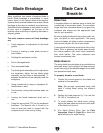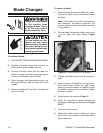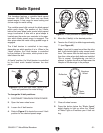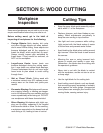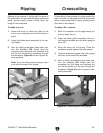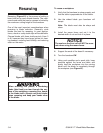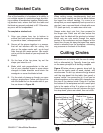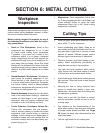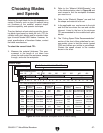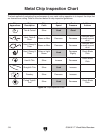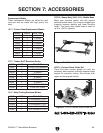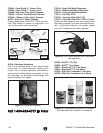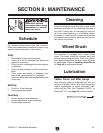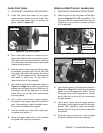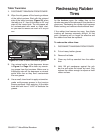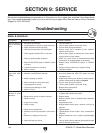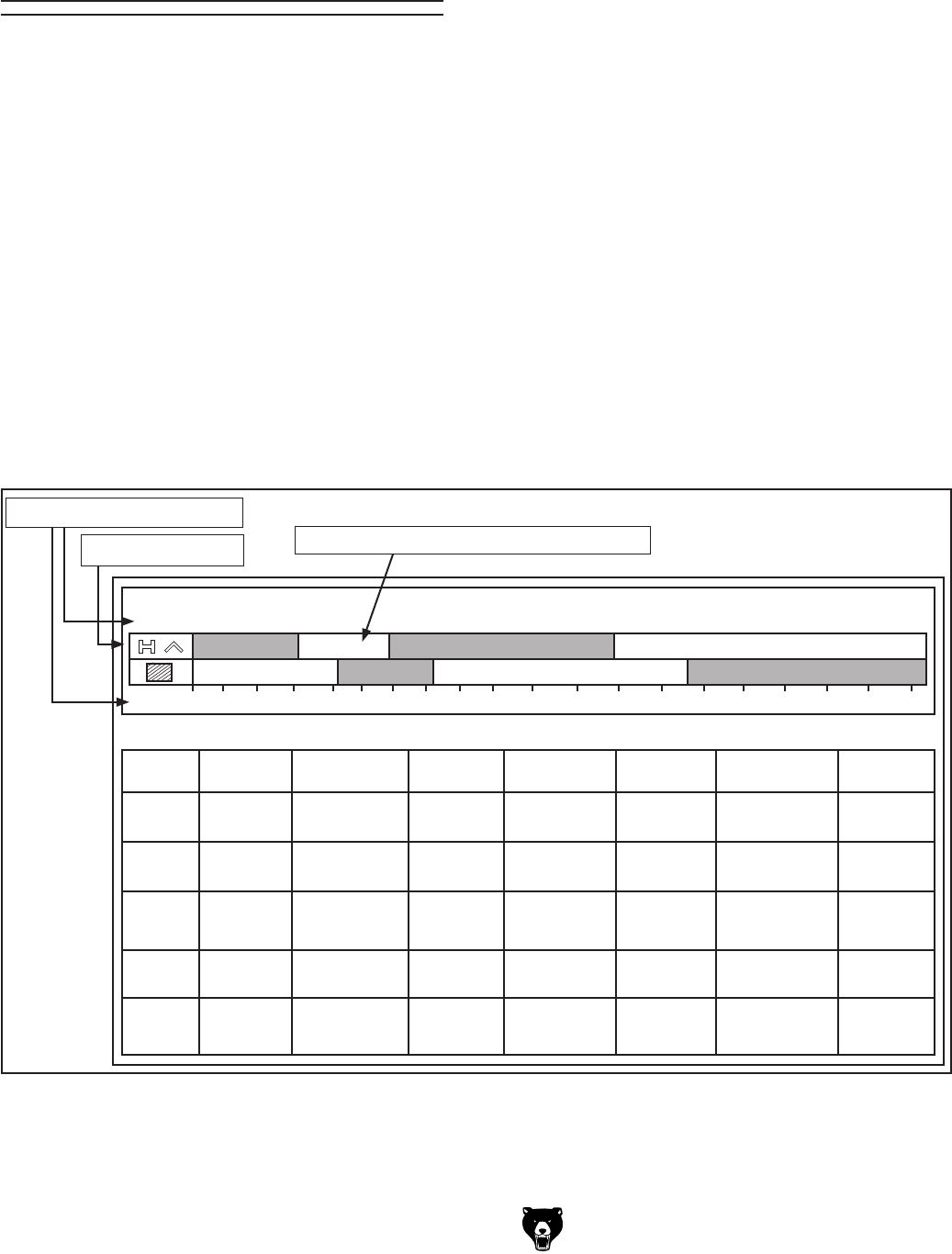
G0640X 17" Wood/Metal Bandsaw
-37-
Material Width
Material Shapes
Teeth Per Inch Variable Pitch Blades
Figure 48. Blade selection and speed chart for metal cutting.
Selecting the right blade for the job depends on a
variety of factors, such as type of material being
cut, hardness of the material, material shape,
machine capability, and operator technique.
The chart below is a basic starting point for choos
-
ing blade type based on teeth per inch (TPI) for
variable tooth pitch blades and for standard raker
type bi-metal blades/HSS blades. However,
for
exact specifications of bandsaw blades, contact
the blade manufacturer
.
To select the correct blade TPI:
1. Measure the material thickness. This mea-
surement is the length of cut taken from
where the tooth enters the workpiece, sweeps
through, and exits the workpiece.
2. Refer to the "Material Width/Diameter" row
of th
e blade selection chart in Figure 48 and
read across to find the workpiece thickness
you need to cut
.
3. Refer to the "Material Shapes" row and find
the shape and material to be cut.
4. In the applicable row, read across to the right
and find the box where the row and column
intersect. Listed in the box is the minimum
TPI recommended for the variable tooth pitch
blades.
5. The "Cutting Speed Rate Recommendation"
section of the chart offers guidelines for vari
-
ous metals, given in feet per minute (speed
FPM) and meters per minute in parenthesis.
Choose the speed closest to the number
shown in the chart.
Choosing Blades
and Speeds



